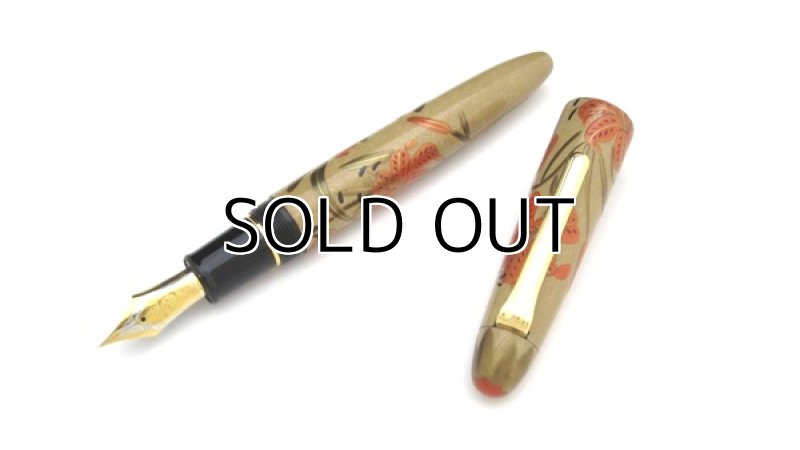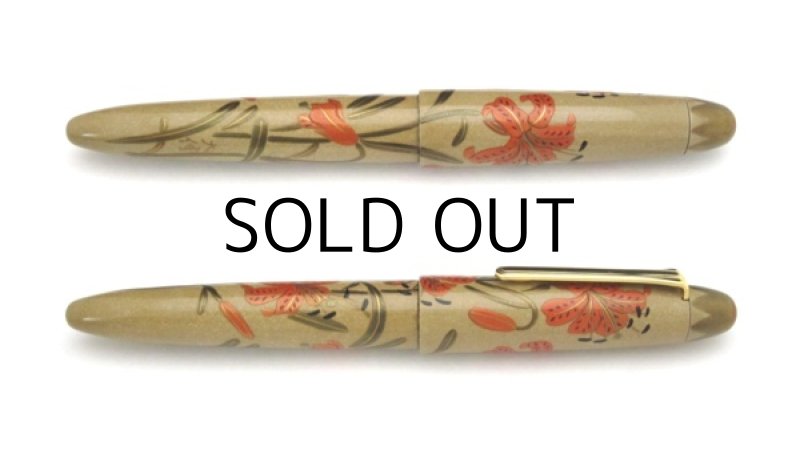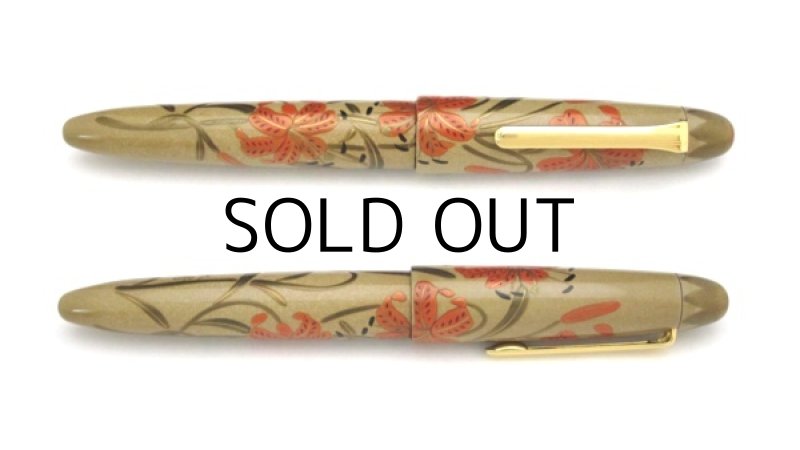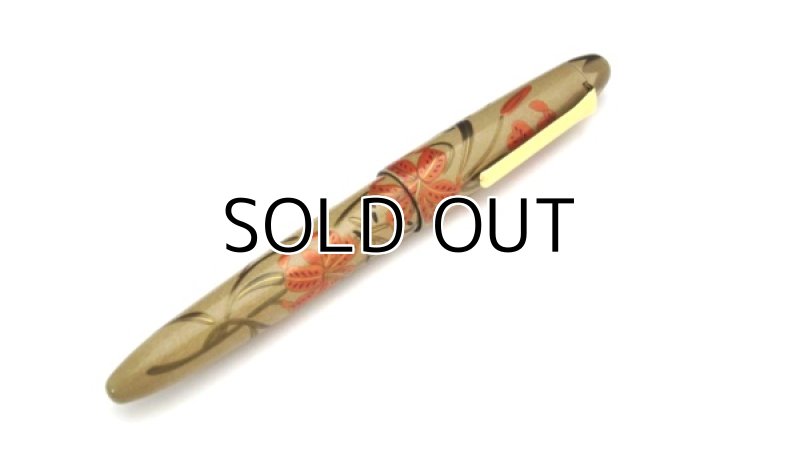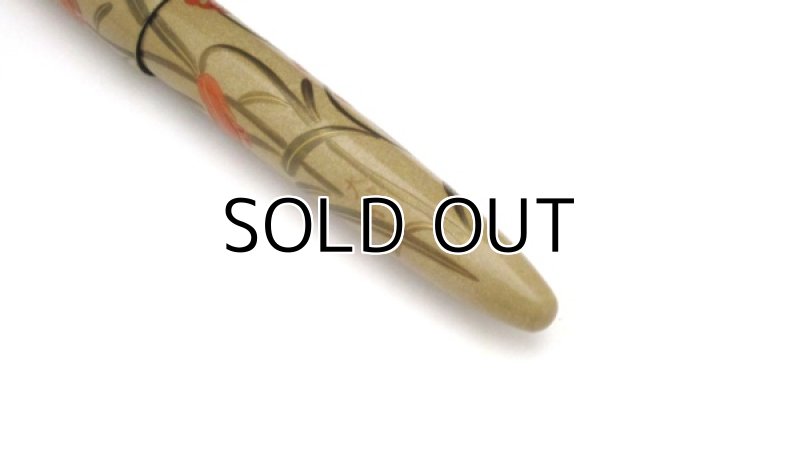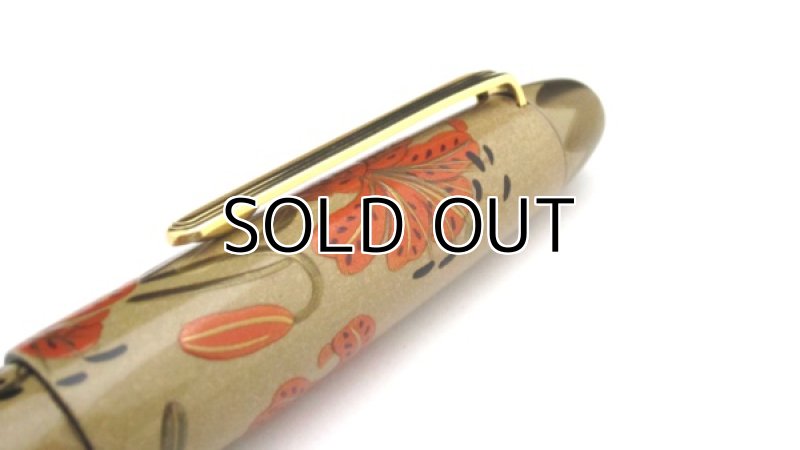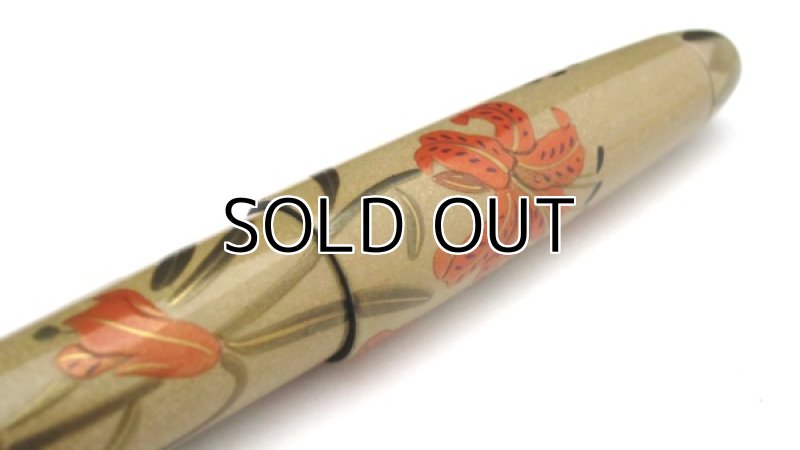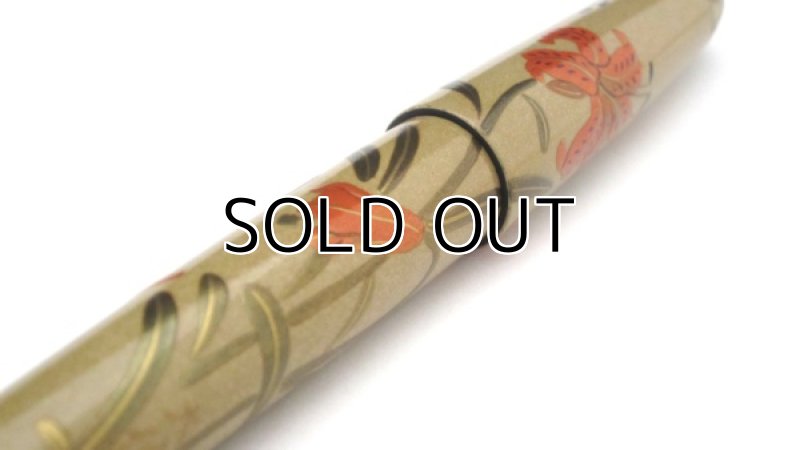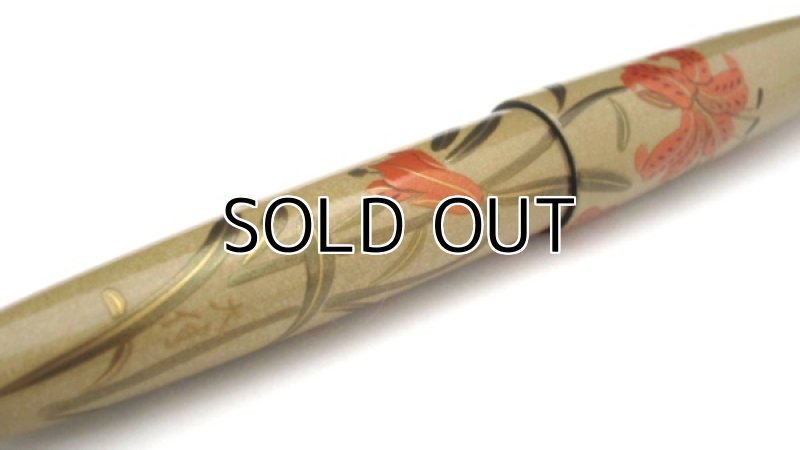AGJ Original Maki-e Fountain Pen #12 "Tiger lily" Sailor King of Pen Ebonite Sparkling Togidashi Taka Maki-e Kyoto Japan Wa
AGJ Original Maki-e Fountain Pen #12 "Tiger lily" Sailor King of Pen Ebonite Sparkling Togidashi Taka Maki-e Kyoto Japan Wa
Please contact us from here for the price.
Item Description
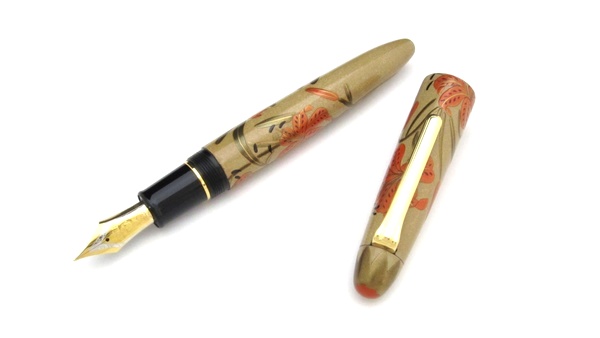
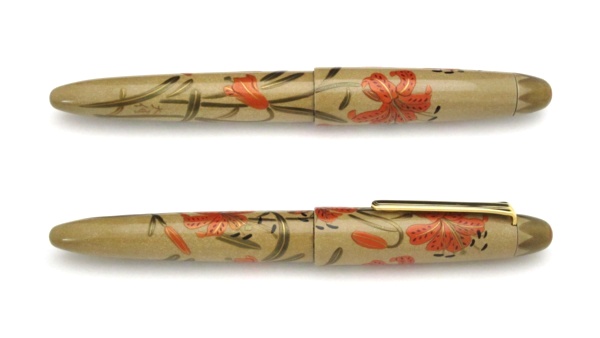
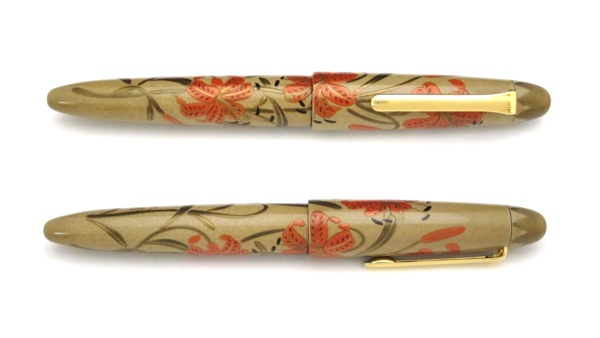
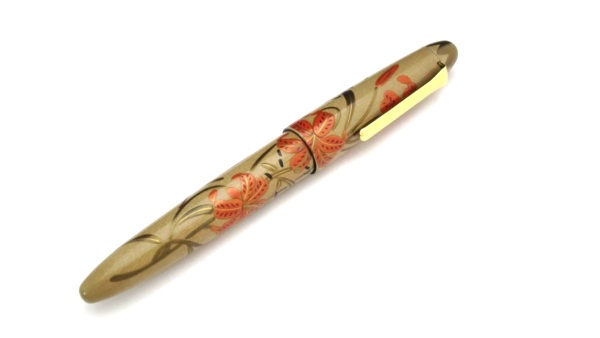
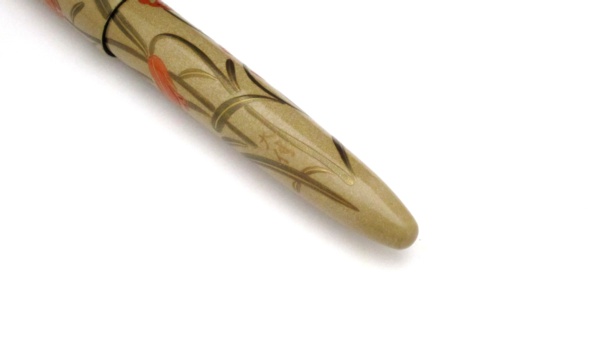
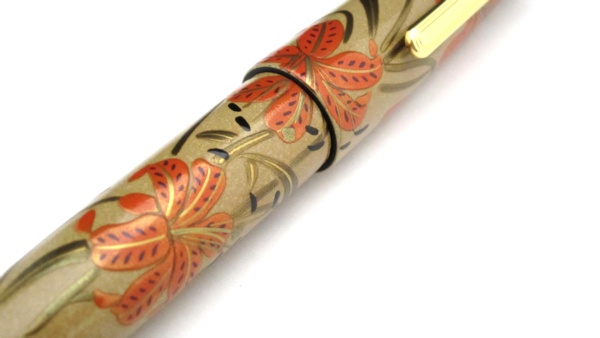
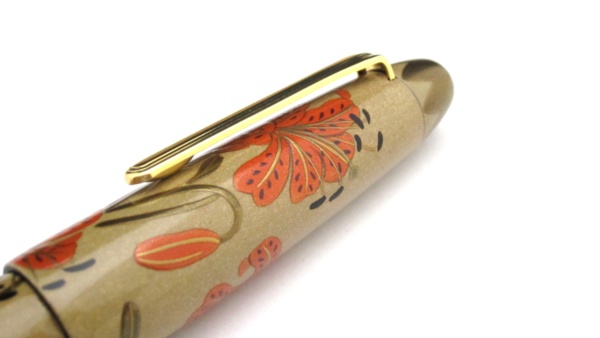
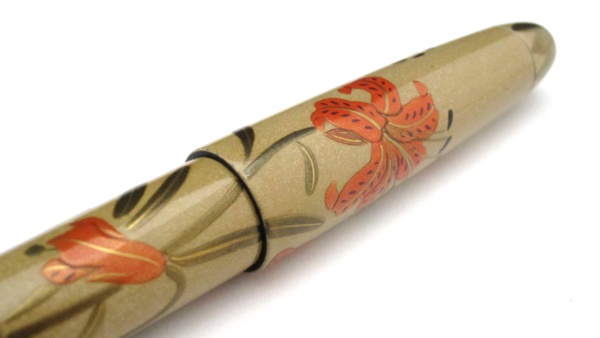
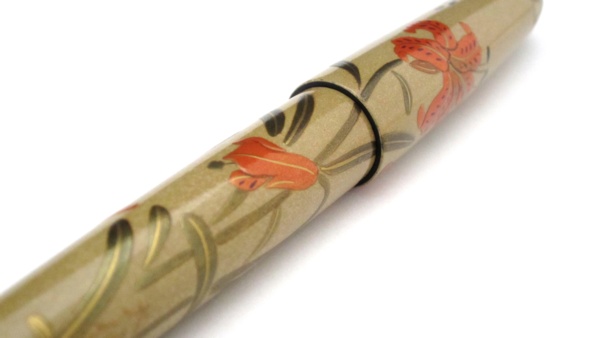
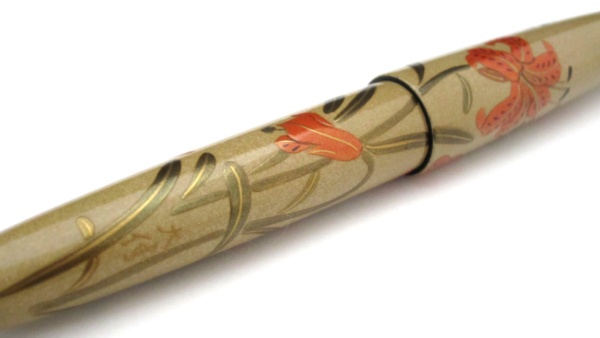
This Authentic Goods from Japan's Original Maki-e Fountain pen is made by famous Kyoto Maki-e Artisan "Daikai".
This pen is only one in the world. You could not find it anywhere.
Kyoto Maki-e is the best known Maki-e technique in Japan.
This is original maki-e fountain pen based on Sailor’s fountain pen, King of Pen.
[Description]
Name: Tiger lily #12 (Sailor King of Pen Original)
Maki-e Artist: DAIKAI
Technique: Togidashi Taka Maki-e
Origin: Kyoto, Japan
Nib: Bicolor 21K Gold
Nib size: Medium
Size: 20mm(Dia.) x 153.5mm
Shipping: FREE SHIPPING!
Others: With the pen stand
Custom engraving service on AGJ's original Maki-e fountain pens is available for those who wish.
1. The lead time: it takes 10-14 days on top (orders without this service will be usually dispatched in 3-5 days after confirming the payment).
2. The cost: US$100.00.
3. The letters of the name engraved will be engraved in gold just as the signature of the Makie artisans of Original fountain pens.
4. Please send us the sample letters which you wish to engrave on the pen (there could be a case where we are unable to engrave the letters of your choice after consulting with the Makie artisans. Letters can be in Japanese Kanji, Katakana and Hiragana but if you choose Kanji, we will use phonetic symbols).
5. Please indicate the exact position where you wish to have your name engraved (please understand that there could be a case where we may have to change the position of engraving after consulting with the Makie artisans).
*Please contact us should you have any queries regarding custom engraving service.
Tiger lily is a tall lily that grows to a height of 1 to 2 meters.
The leaf has pointed apex which is called lanceolate shape. They form alternate leaf arrangement. Stem color is purplish brown, and has small spots.
Flowering season is July to August. The orange colored petals are warped, and have dark purple spots. As a traditional pattern, tiger lily is widely used for many art works in Japan.
Process:
Ivory colored base (white lacquer):
1. Paint Bengara lacquer on the body and cap.
2. Sprinkle powder lacquer on it. (powder lacquer is described below)
3. Dry it, and paint white lacquer in many layers until the surface becomes flat.
4. Burnish it.
5. Moisten it with water, and burnish it with charcoal until the surface becomes flat.
6. Polish it.
7. Make it shiny.
How to make powder lacquer:
1. Paint white lacquer in many layers on a glass plate until it becomes thick.
2. Tear the lacquer layers off the glass plate in water.
3. Dry it.
4. Crush it to make powder lacquer.
This powder lacquer provides distinct grace and elegance from just painted lacquer.
Flower Part (gold-vermilion color):
1. Paint Bengara to swell part of the ivory-colored area.
2. Sprinkle silver powder, and dry it. Then, burnish it
3. Paint Taka-age lacquer (mix of black and Bengara) to swell it.
4. Dry it and burnish it.
5. Sprinkle gold powder in size 9.
6. Dry it, and harden it with red lacquer.
7. Burnish it.
Vein Part:
1. Paint Bengara on gold-vermilion-colored area.
2. Sprinkle gold powder with the method called Hira maki-e.
3. Dry it, and burnish it.
Leaf Part:
Swell it with silver, and sprinkle gold powder in size 6.
Pistil and Stamen Part:
Paint colored lacquer (dark purple) on gold-vermilion-colored area.
[DAIKAI's Career]
Urushi Lacquer Master : Daikai Uehara’s Career
Year 1950 Born in Kyoto
His father, uncle, grand father and grand-grand father were Urushi Lacquer masters too.
1969 Another Urushi artist“ Masakichi Shima” started teaching Daikai.
1976 Daikai began succeeding to inherit the style of Kyo makie(Maki-e).
1985 Won the Kyoto Chamber of Commerce Award at Kyoto Lacquerware exhibition.
1986 Held Urushi Lacquer exhibition at Kyoto Takashimaya(the largest department store in Japan).
1990 Exhibited at the Arts and Crafts in kyoto.
1991 Became a technical lecturer for the artists at the traditional industry at Kyoto.
1994 Opened his Kyoto Urushi lacquer school.
1995 Invited to display his works at INFA 1995 in Hannover, Germany.
1997 Won the award at the industrial techniques for the crafts in Kyoto.
1999 Held the first Kyoto Urushi lacquer school’s exhibition at Ko-dai temple, Kyoto.
2001 He has held the traditional crafts exhibition every year since 1999.
2008 Held Amber Maki-e and Lacquer works exhibition at Sogo department store.
2009 Held Kyoto Urushi Lacquer exhibition at Takashimaya in Namba, Osaka.
He lives in Kyoto now and teaches many Maki-e artisans Kyoto-Makie technique.

